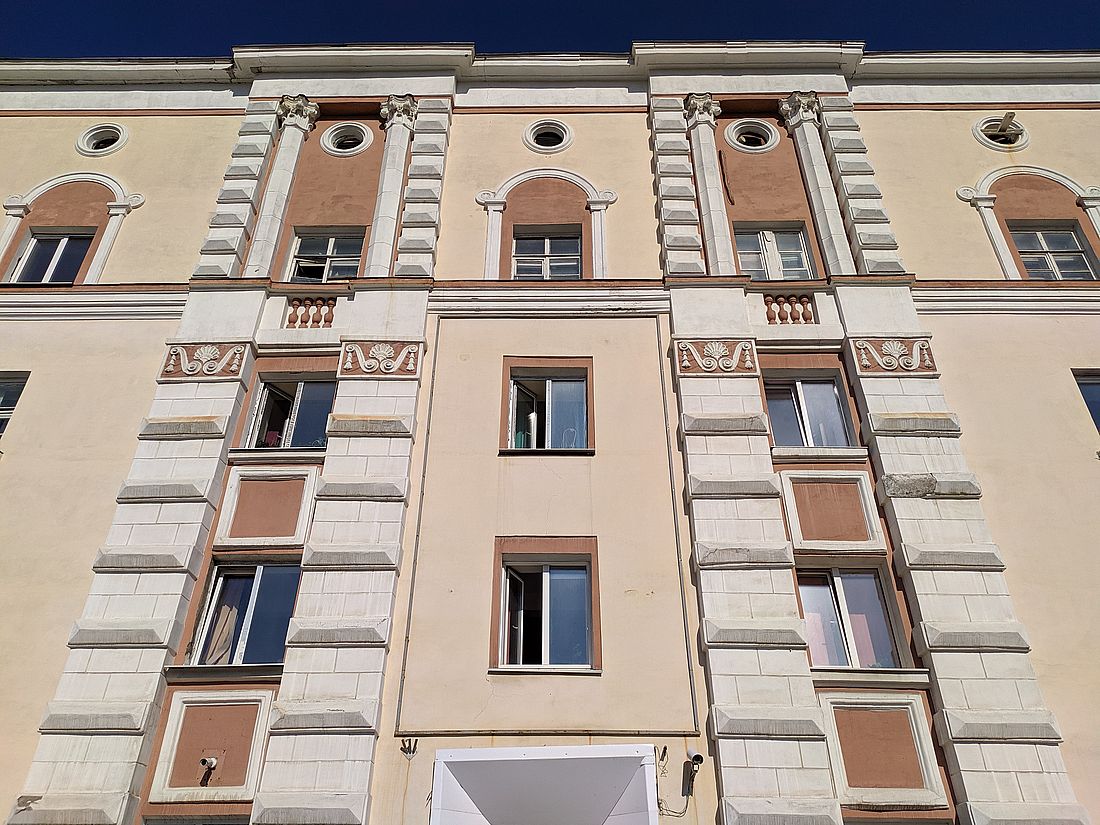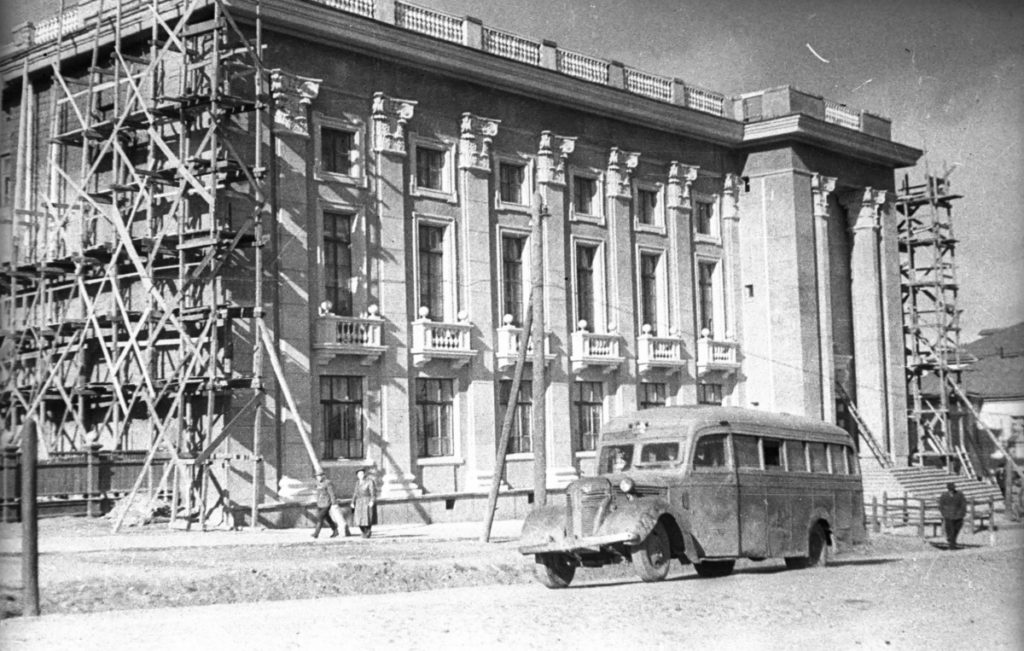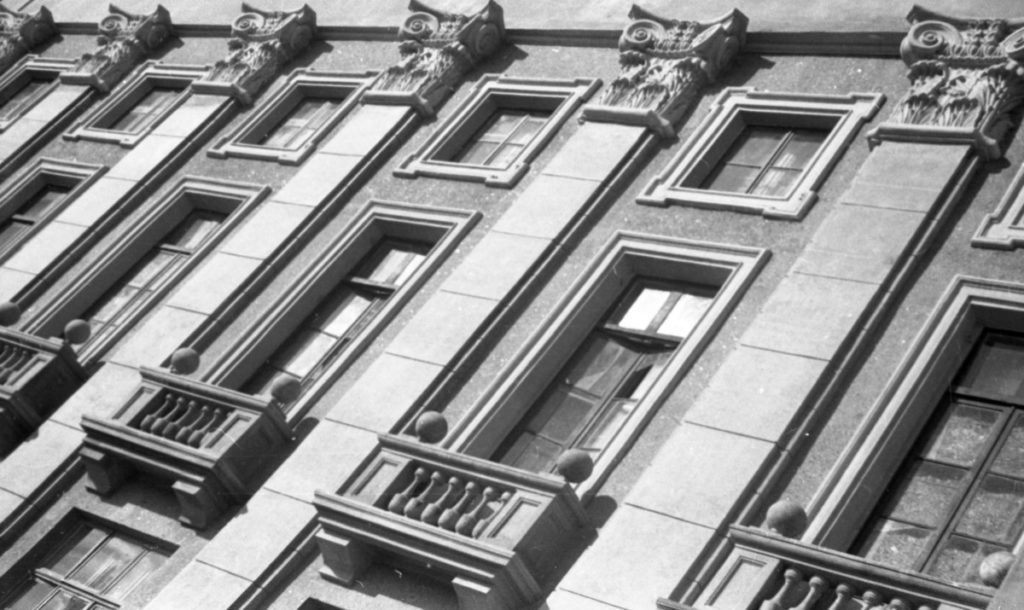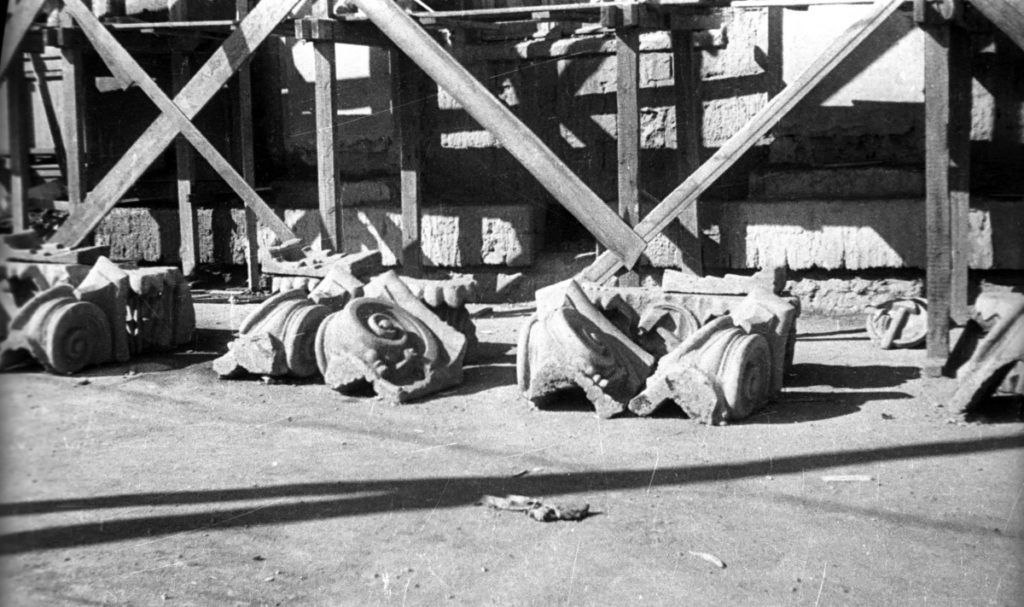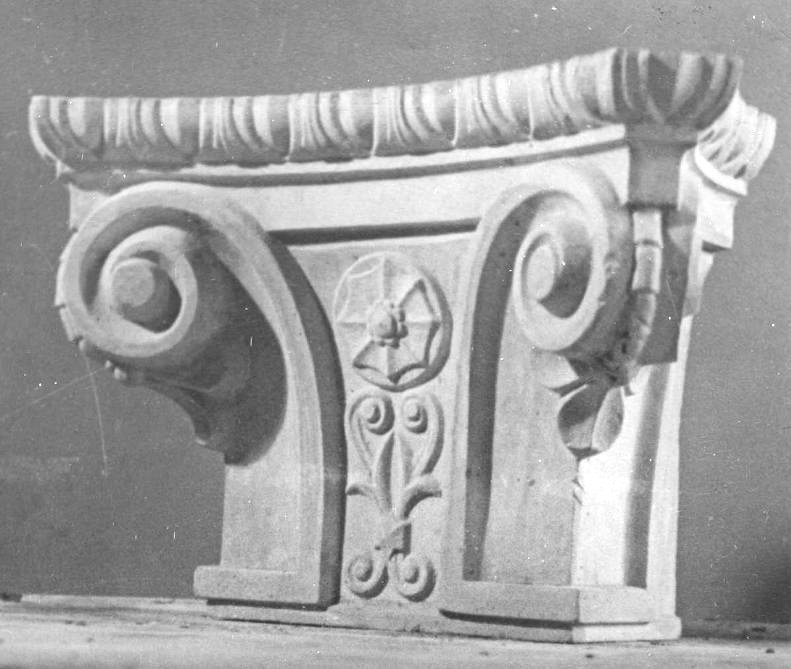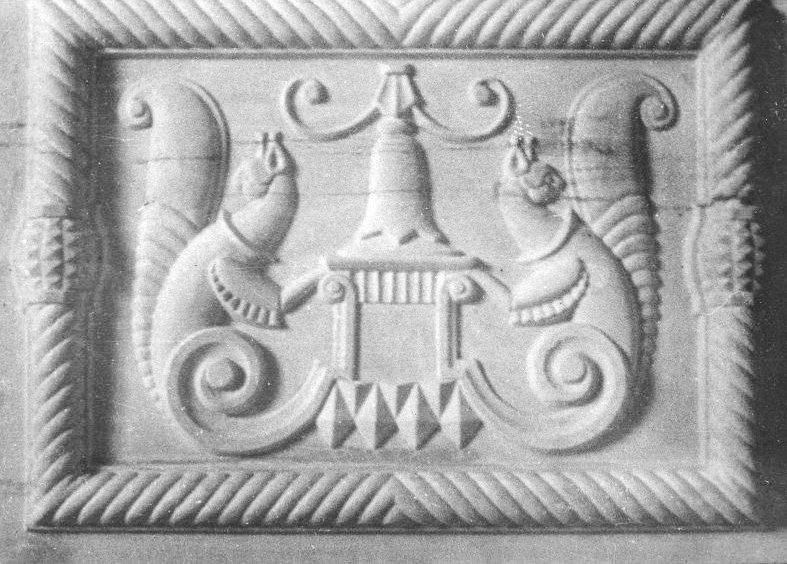#ARCTIC. #SIBERIA. THIS IS TAIMYR. Unlike its predecessors, it has not been converted from a camp canteen or residential barrack. The so called DITR was designed as a Palace of Culture. The project was entrusted to young architects Vitold Nepokoichitsky and Lydia Minenko.
The DITR building, in addition, was the first one in Norilsk to be richly decorated, as they later said, with ‘architectural excesses’ – capitals and pilasters, false columns and false balconies.
Numerous stucco molding required qualified execution, therefore, during the construction of the DITR, a sculpture workshop was specially organized, where Nepokoichitsky himself taught the workers.
As the architect later recalled, no one could cope with the manufacture of complex models: “Therefore, I had to shake up the antiquity and apply the sculptural skills acquired in the art college. Every day after my main job in the design department, I turned into a sculptor for several hours. All the molders worked with enthusiasm and tried as best they could, and soon became good helpers for me. By August 1942, all sculptural work was completed”.
It was with the manufacture of architectural details of DITR in Norilsk that sculptural production began: plaster bas-reliefs and concrete castings to decorate the facades and interiors of buildings put on stream.
Architects, developing them, tried to find new meanings, combining, for example, Soviet symbols and northern motives.
So, in the architecture of Octyabrskaya square, South line and Sevastopolskaya street, molded parts with polar partridges and turukhtans, hares and squirrels organically entered.
For other issues of our photo project about the history of the city and the combine, go to the History spot section.
Follow us on Telegram, Instagram and Facebook.
Text: Svetlana Samohina, Photo: Nornickel Polar Division archive
